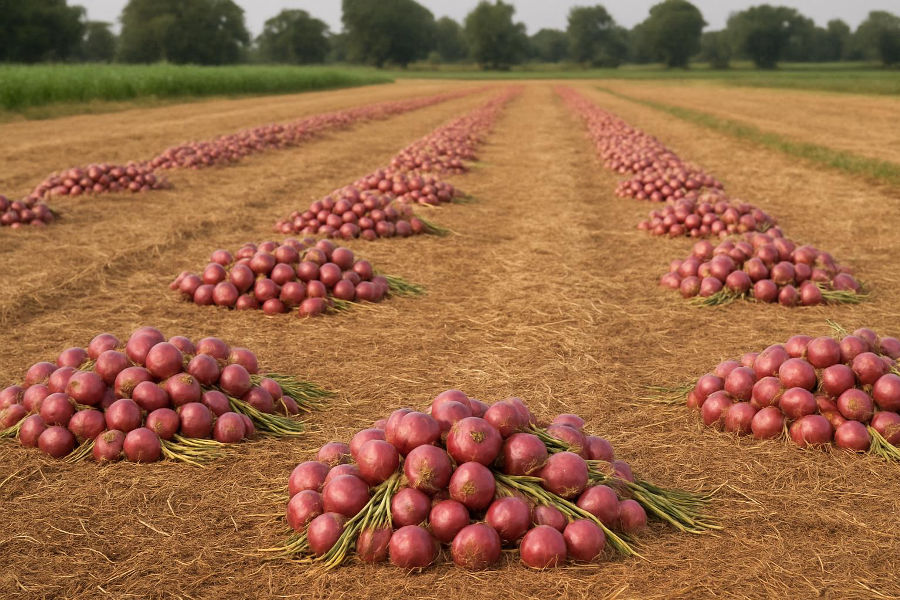Curing of Onion: The Key to Long Shelf Life and Quality Bulbs
Curing is a crucial post-harvest step in onion farming that directly affects the shelf life, quality, and market value of the produce. Without proper curing, onions are more prone to rot, sprouting, and shrinkage during storage.
What is Curing?
Curing is the process of drying the outer layers and neck of the onion to remove excess moisture. This hardens the outer skin, seals the neck, and reduces microbial attack, allowing the onion to be stored for a longer period.
How to Cure Onions Effectively
-
Harvest at the Right Time: Onions should be harvested when 60–80% of the tops have fallen over. Avoid delaying harvest as over-mature onions can split and rot.
-
Field Curing (Optional): Leave harvested onions in the field for 2–3 days if weather permits. Ensure they are not exposed to rain or excessive sunlight.
-
Shade Curing: Move onions to a well-ventilated, shaded area. Spread them in thin layers on racks or clean surfaces. Avoid piling to ensure uniform drying.
-
Duration: Curing usually takes 10–15 days depending on weather conditions. The outer skin should be dry and papery, and the neck should be tight and dry.
-
Remove Tops: After curing, cut the tops leaving about 1–2 cm above the bulb. Don’t cut too close to avoid neck rots.
-
Storage: Store cured onions in well-ventilated, dry conditions at a temperature of 25–30°C with low humidity.
Why Curing Matters
-
Increases shelf life
-
Prevents fungal and bacterial diseases
-
Improves appearance for market
-
Reduces post-harvest losses
Proper curing is a simple but powerful step that can make a big difference in the success of your onion crop. For commercial growers, it is essential to include this process as a part of their post-harvest management strategy.
